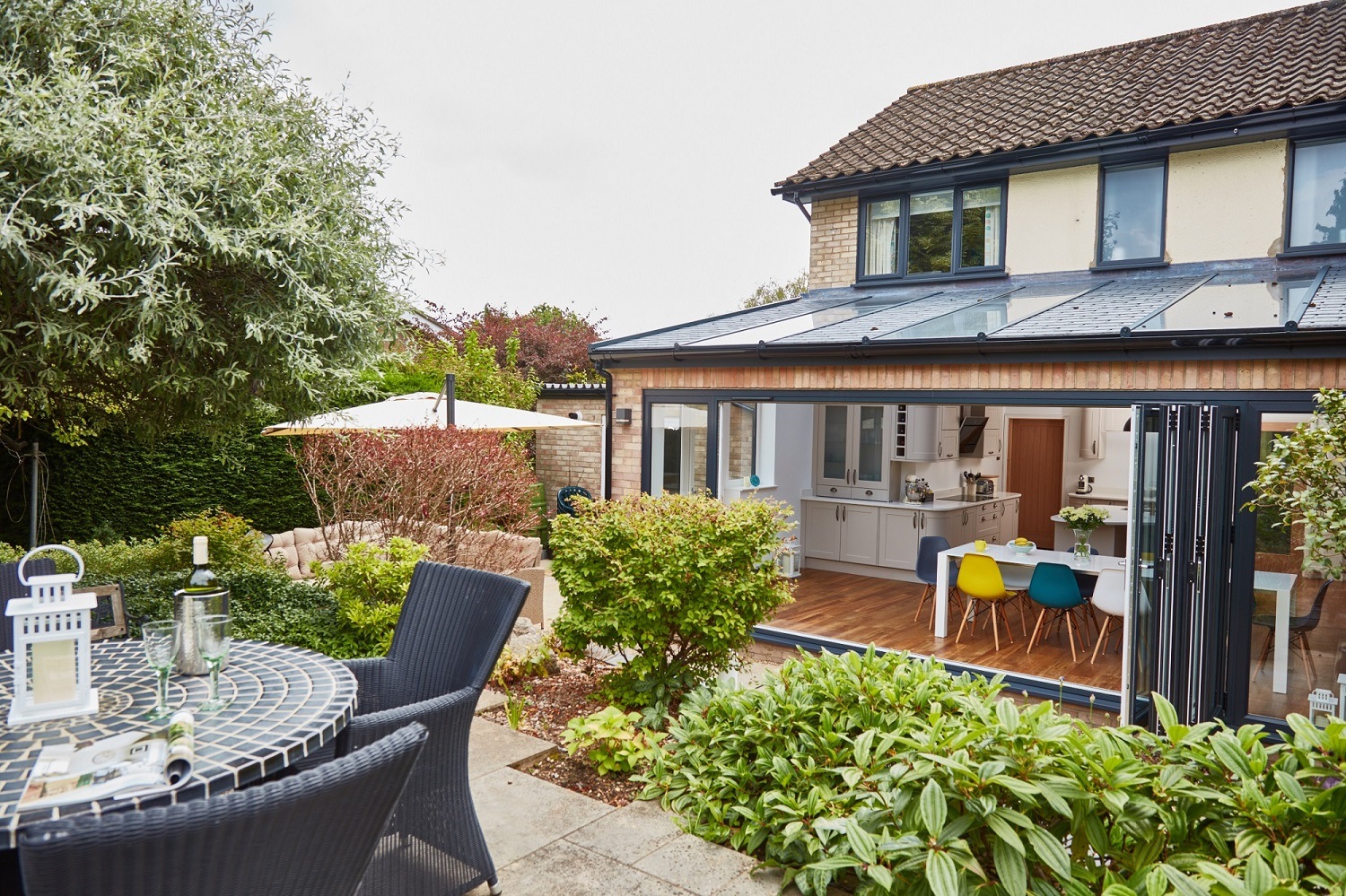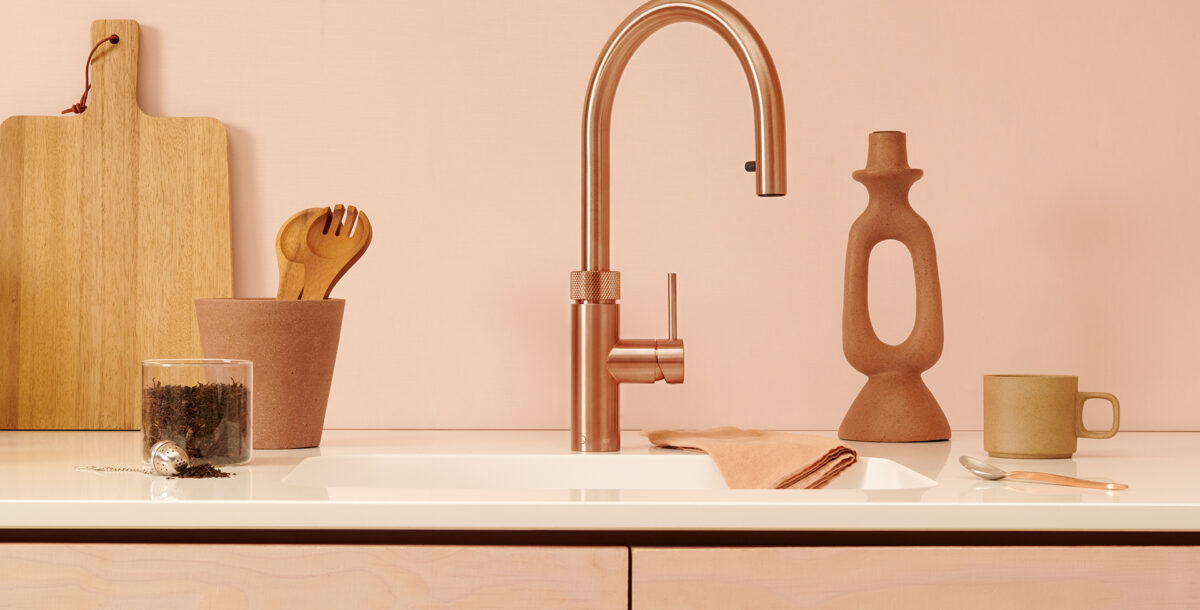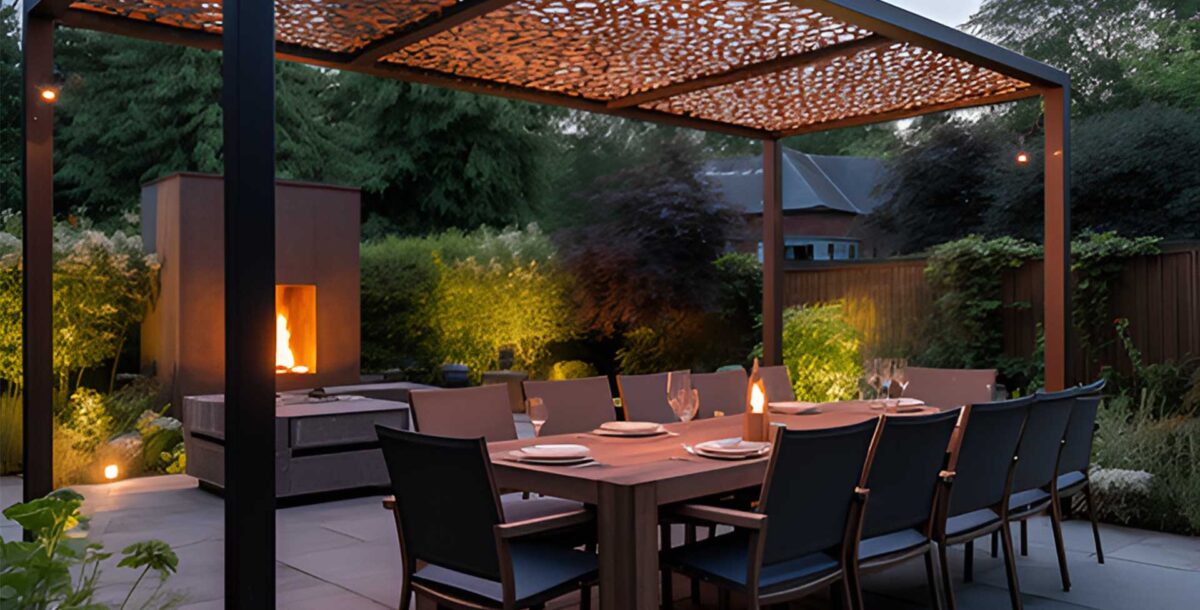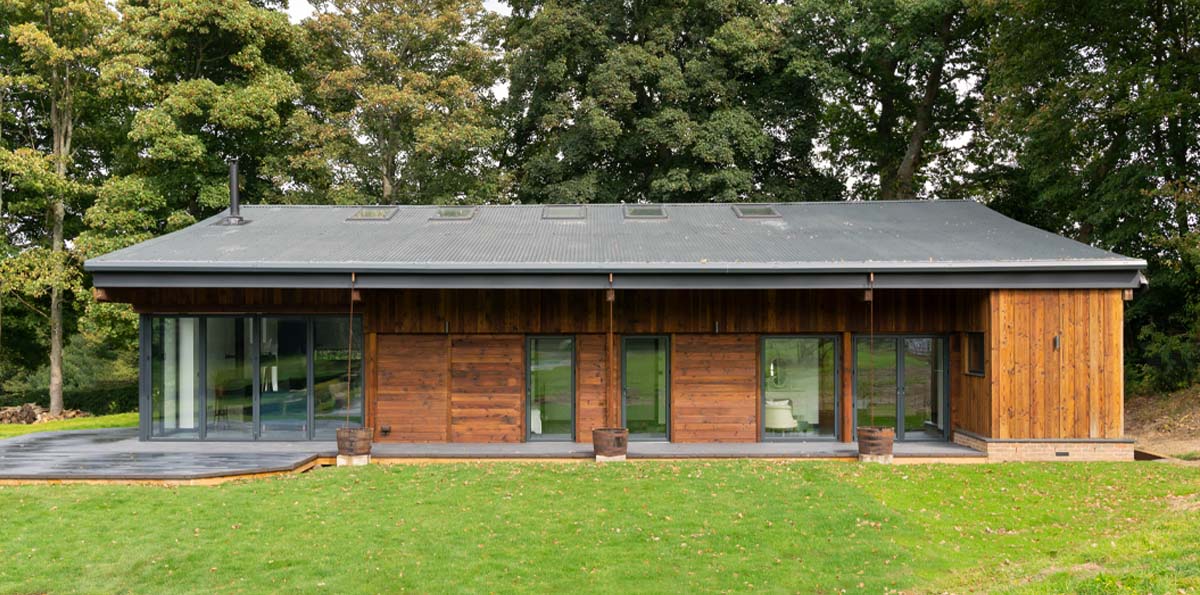Ultimate bifold doors guide – styles, types, and pros and cons
We’ve got everything you need to know to help you buy the best bi-folding doors for your project
Here’s our guide to that most desired door: the bifold.
Dave Palmer, from MyGlazing.com, trade body the Glass and Glazing Federation’s consumer advice website, gave us some advice about the best bifold choices. He began by reminding us of the reasons for their popularity: “Bifolding doors seamlessly bring outdoor and indoor living space together. In addition to increasing living space, bifolds can increase natural light and ventilation. They can also aesthetically improve and increase the value of your home, while improving your lifestyle.”
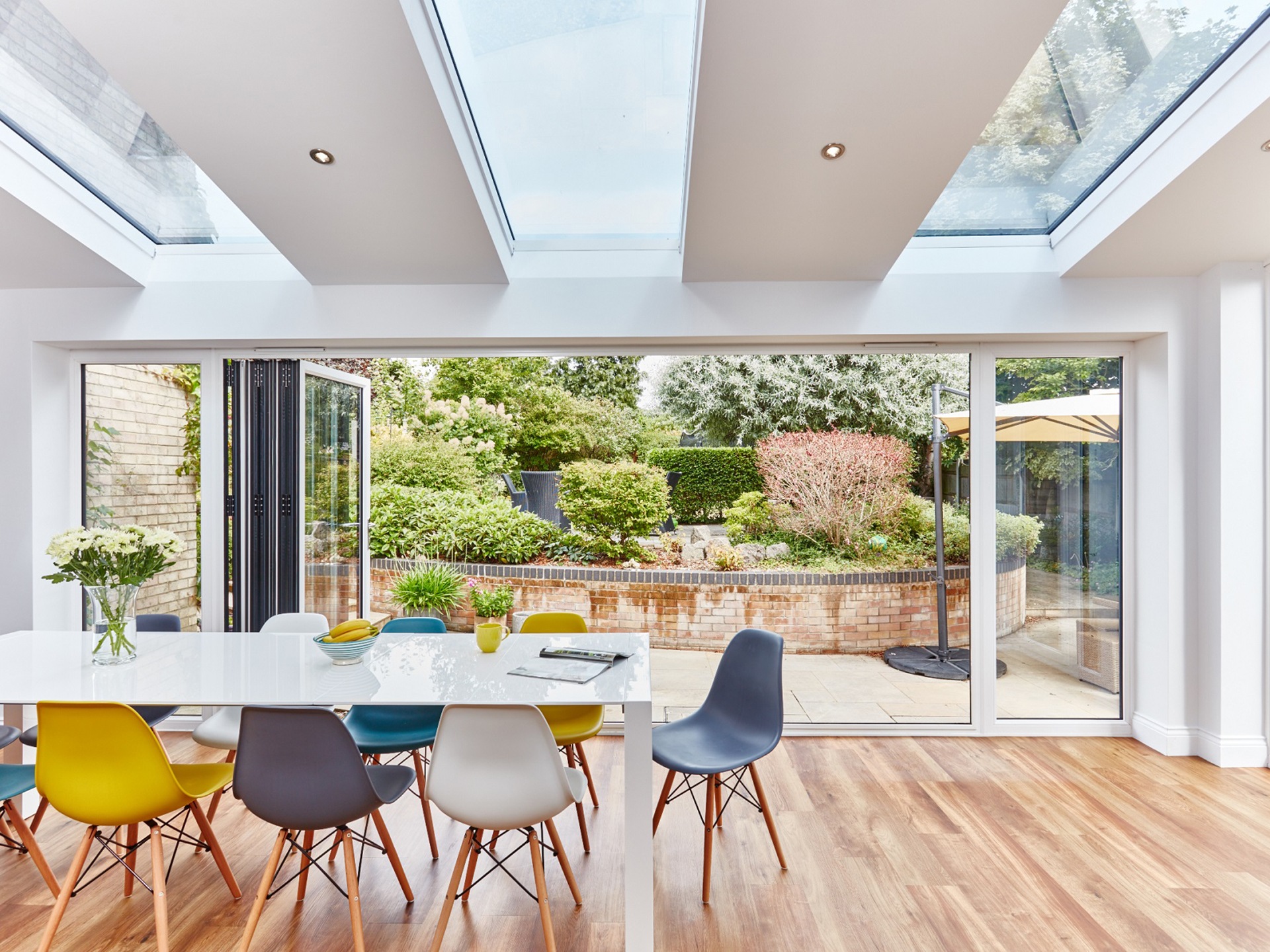
Image credit: Anglian Home Improvements
What are bifold doors?
Bifold doors are a series of glazed doors used to fill a large aperture (usually created for the purpose) in a ground-floor wall, usually overlooking a patio or garden. They are hinged together and, when opened, concertina back on themselves into a small space on one side of the aperture, making them a type of space-saving door. Bifolds have a large ratio of glass to frame, allowing lots of light into the property. When fully open, they allow a merging of indoor and outdoor living space. Sometimes, bifolds are known as folding sliding doors.
Types of frame
Bifolds are generally made from one of four materials:
- aluminium: easy to maintain; powder-coated finish is available in a lot of different colours; no painting required; doors can be wider than timber doors (meaning fewer doors required); lightweight
- timber: classic option for traditional/period homes; cheaper timber models can be prone to warping when exposed to heat and moisture, which means they could get stuck in the tracking; require regular painting/varnishing to maintain appearance
- composite (aluminium frames with timber internal facings): offers the best of both materials
- uPVC: less expensive; low maintenance; good thermal performance; available in many colours; limited size range; may not last as long as other materials
Sustainability
Bifold doors are mainly glass, which can be recycled. Aluminium is also highly recyclable, and timber is a good choice, too, if you choose wood from a Forest Stewardship Council (FSC) certified sustainably managed source.
Top-hung vs bottom rolling
There are two ways in which bifold doors can be engineered: top-hung and bottom-rolling.
Top-hung doors are suspended from a track in the top of the door frame. The bottom track is just to guide the bottom of the doors when they are folding and unfolding. Palmer explains: “With top-hung bifold doors, the overhead operations are easier to conceal, and the doors are less likely to jam because of grit in the operating mechanism. However, they require the installation of a strong lintel or beam to take the weight of the doors.”
In the past, top-hung bifolds had a reputation for unreliability and even sagging, but more modern models, with what are known as ‘captive rollers’, are more reliable,
Bottom-rolling (or bottom-track) doors run in the bottom track and all their weight is supported there. Palmer says, “The sliding motion can be affected if grit or dirt gets into the tracks and rollers.”
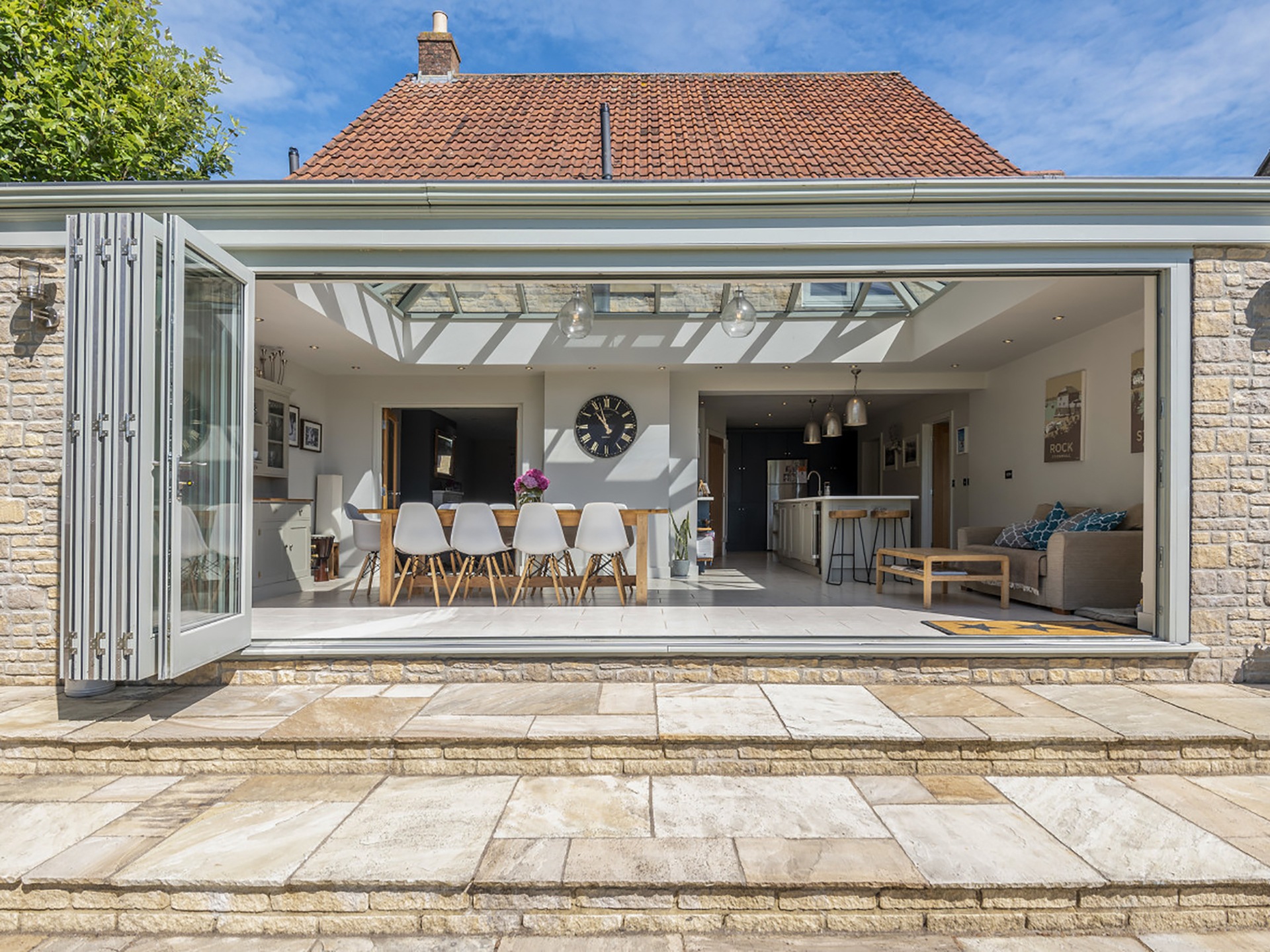
Image credit: David Salisbury
Bifolds and building regs
Building Regulations are legally enforceable rules for construction designed to ensure the safety, energy efficiency, etc, of building work. There are several parts of the regulations (regs) that may apply to the installation of bifold doors, depending on your specific situation and whether you are converting, extending or undertaking a new build, including:
- Part A (structure): may be relevant if you are having significant structural work to facilitate the installation of your bifolds
- Part B (fire safety): the rules say any ground floor room must have a viable means of escape other than the door
- Part F (ventilation): you may need to have trickle valves in your doors to contribute to the ventilation of your house
- Part K (protection from falling, collision and impact): bifold doors need to be fitted with toughened or laminated glass
- Part L (energy efficiency): because bifolds feature large areas of glazing, they need to be fitted with very thermally efficient glass. Their thermal efficiency is measured by something called u-value: the lower the u-value the better (ie the greater thermal efficiency, which means the less heat will escape). Part L specifies maximum u-values allowable for glazed doors in renovation and new-build projects. These are: for replacement and extension glazed doors – 1.4Wm2K or minimum category C BFRC rating; for new builds – 1.6Wm2K
- Part M (accessibility): new homes are required to meet regulations regarding their accessibility to people with disabilities, and bifolds could form part of this provision
- Part O (overheating): these new regs for new builds mean glazing can’t be too large in relation to the size of the room, and set out lots of rules to follow to deal with the potential problem of overheating
- Part Q (Security): this says that new doors, doorsets and windows (including bifolds) must comply with standard PAS 24, which specifies how well these must be able to resist an opportunist attack from potential burglars. This means, to meet building regs, you need to choose PAS 24-compliant doors.
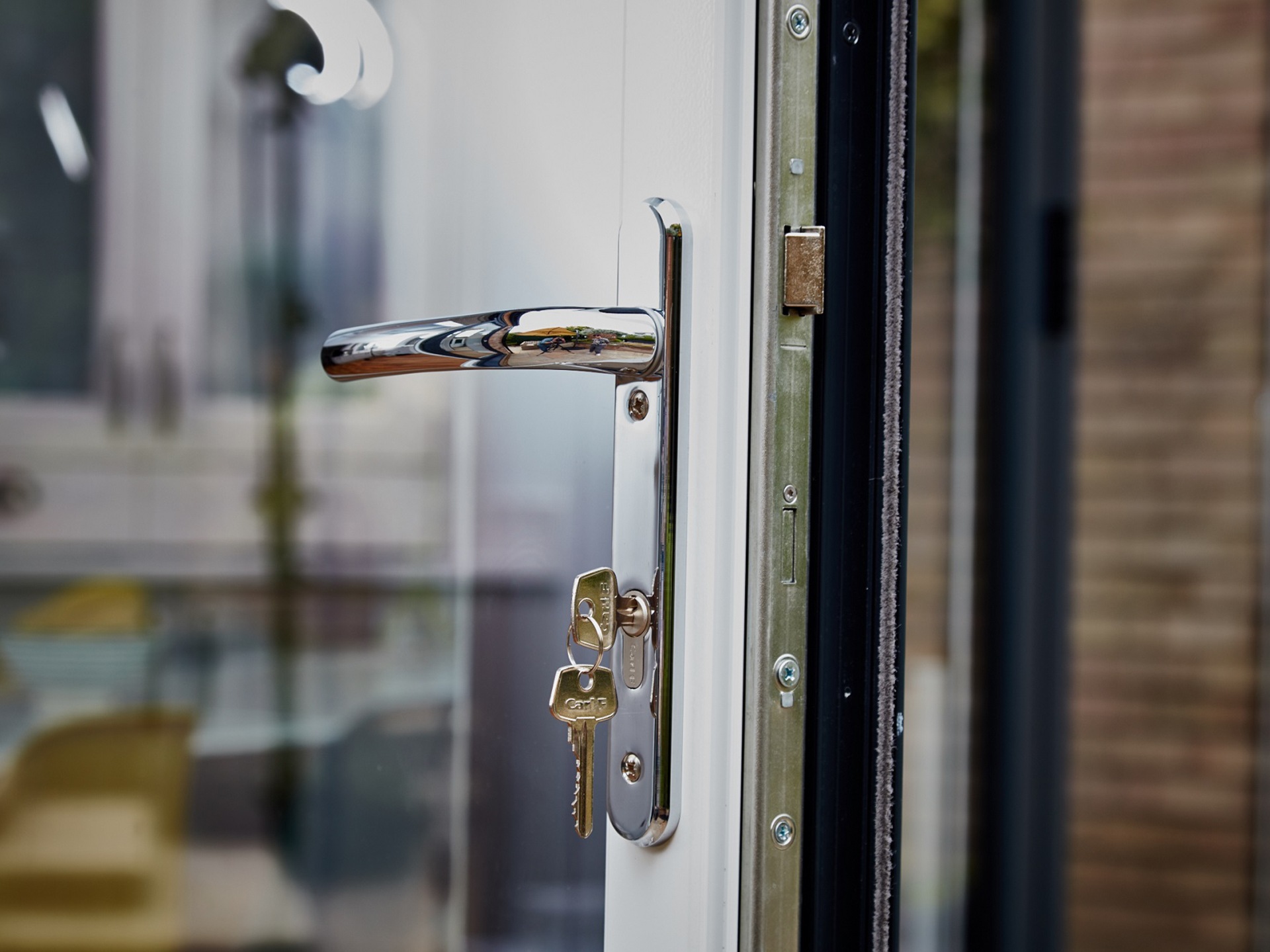
Image credit: Anglian Home Improvements
As you can see, meeting the requirements of the Buildings Regulations is a complicated business. So, on a new build, work with architects, designers and suppliers who you trust to specify and deliver doors that will meet all the requirements. Purchase regs-compliant products and keep the receipts because, in due course, you will need to get a sign-off from a building inspector.
If you are replacing existing doors or windows, be sure to use a FENSA-registered installer. FENSA is a government scheme that allows its members to self-certify that their replacement windows are compliant with building regs. Members also register your works with your local authority for you. You can find FENSA member companies here.
Planning permission
Planning permission can be complicated. Chances are, you won’t need planning permission to install bifolds: certainly, if you are just replacing existing glazed doors; or, if the bifolds are part of an extension allowed under permitted development rights. But, if you live in a listed building, conservation area, or area subject to an Article 4 direction, you probably will need to obtain consent. Talk to your installer and, if need be, your local planning authority, to get advice before doing any works.
Double vs triple glazing
Triple glazing is more thermally efficient than double glazing, but that comes at a cost: triple-glazed windows are very heavy (as well as more expensive).
Traffic door
Many people choose to have what is known as a ‘traffic door’ within their bifold range. This door works like a traditional door, opening and locking completely independently from the rest of the system. It means you can pop in and out easily without opening the main door range.
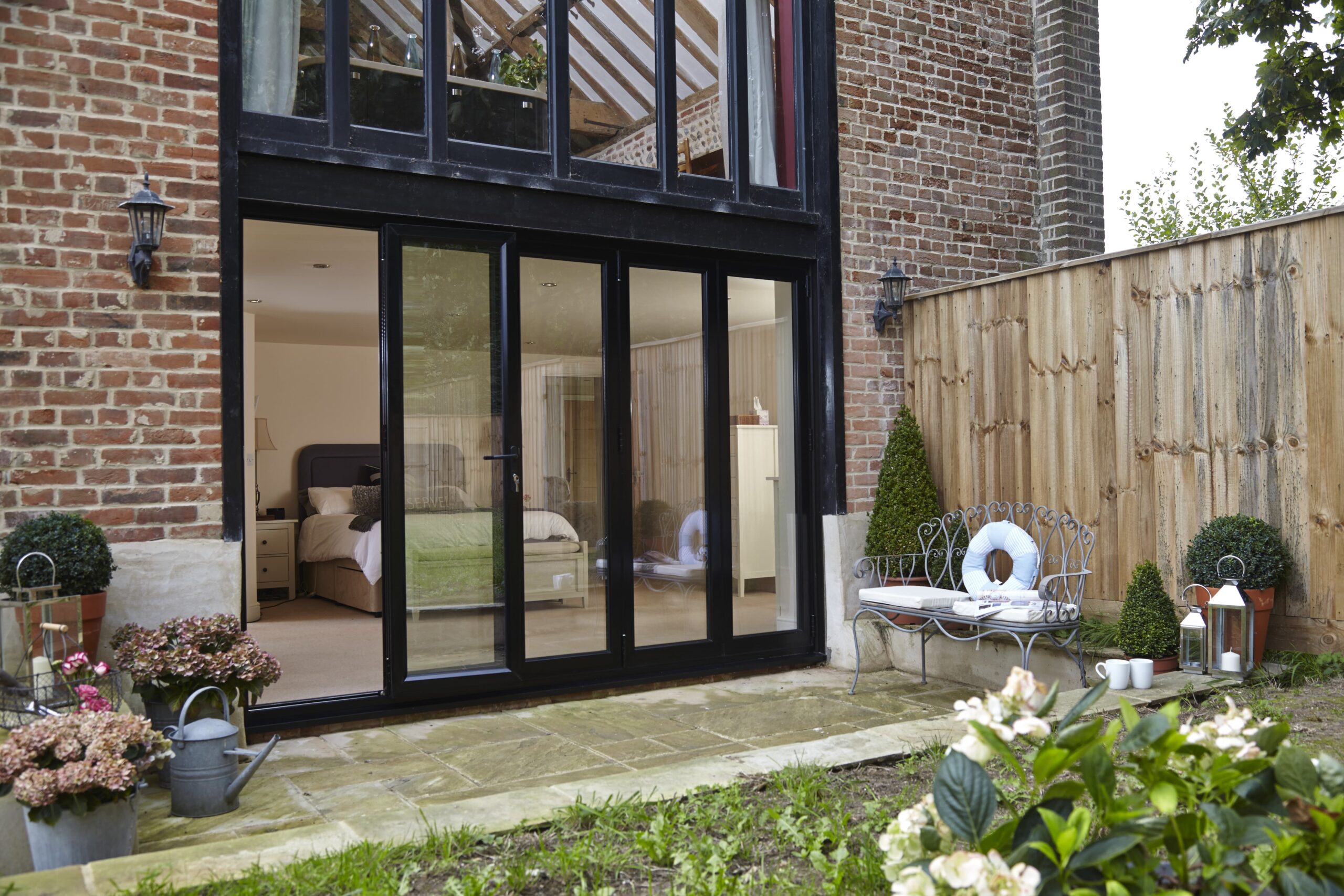
Image credit: Anglian Home Improvements
Space for stacking
One thing you have to remember with bifolds is that you need space at one side of the aperture, either within the room or outdoors, to accommodate all the folded doors when they are open.
Talking of all that folding, it’s important to remember you can specify bifolds with finger guards to stop kids’ fingers from getting trapped.
Threshold
The bottom of the bifolds, containing the track they run in, where the outside meets the inside, is called the threshold. There are different types of threshold, some perfectly flat, others to up to 7cm or so in height:
- flush – almost invisible, gives the fashionable seamless look to which everyone aspires, but really designed for indoor use; could be a good option leading into a conservatory
- rebated (or weathered) profile – a higher threshold that contains weather seals and offers greater protection against rain ingress
- low profile – minimal visual intrusion and minimal trip hazard, can be achieved by recessing a weathered profile threshold into the floor to lower it
- high performance – a threshold that offers the highest levels of weatherproofing
- ramp – a sloping ramped threshold can be a good option in terms of accessibility
There is generally a trade-off between looks and weatherproofing when it comes to thresholds: talk to your installer to work out what is the best solution given the situation of your doors, who lives in your house, and what you want the end result to look like.
Whether you have top-hung or bottom-roller doors, it’s important to keep the bottom track clean and free of debris. So go over it regularly with the nozzle attachment of your vacuum cleaner.
Palmer adds: “If you’re planning on opening your bifolds fully regularly – and therefore leaving both your inside and outside connecting flooring susceptible to the elements – do check with your flooring provider that your floors are suitable for this and don’t end up dangerously slippery when exposed to water.”
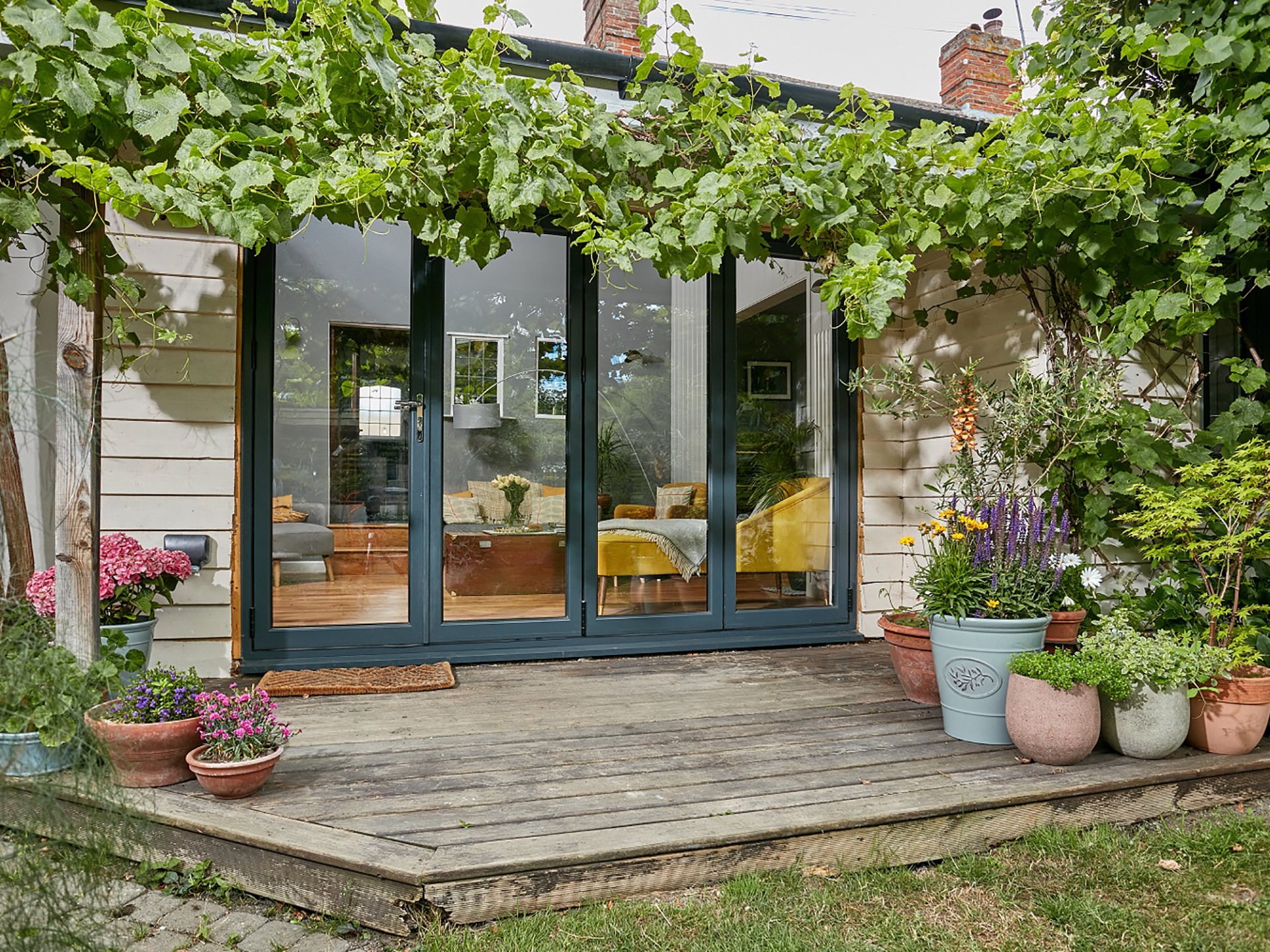
Image credit: Anglian Home Improvements
Cost
The price of your bifolds will depend on the specification and size of the project. But as a ballpark figure, reckon on between £1000 and £2000 per section depending on spec and quality.
Weather matters
It is worth considering the weather where you live before you opt for bifolds. In some climates, homeowners find themselves opening the doors so few days of the year that they regret installing them. In other places, the problem might be overheating at some points in the year due to the large expanse of glass. It’s definitely worth talking to local friends and neighbours with bifolds to hear of their experiences before taking the plunge.
Problems
This video explains what’s going on with the common problem of bifolds ‘dropping’ at the corners – and how to fix it.
A new approach
What of current trends in bifolds? Mervyn Montgomery, of Hampton Conservatories, told us the installation of bifolds is becoming more considered: “The key advantage of bifold doors lies in their ability to open up expansive frontages, for example, from an orangery through to an outside terrace. While bifold doors continue to be popular and creating an expansive aperture is still paramount, more focus is being given to their practical application and design.
“When bifolds were fairly new on the scene, the only goal was to open up the largest possible wall space. Their use is now more subtle with better consideration being given to the internal space and whether it is helpful to have doors that fold right up to the wall. In fact, leaving some wall space around the doors, say around 800mm, is often more pragmatic in terms of placing furniture or housing a run of kitchen units.
“Similarly, the contemporary look that shouted bifold doors is now often replaced with a more classical aesthetic that combines traditional styles of fenestration with the practicality of these products.”
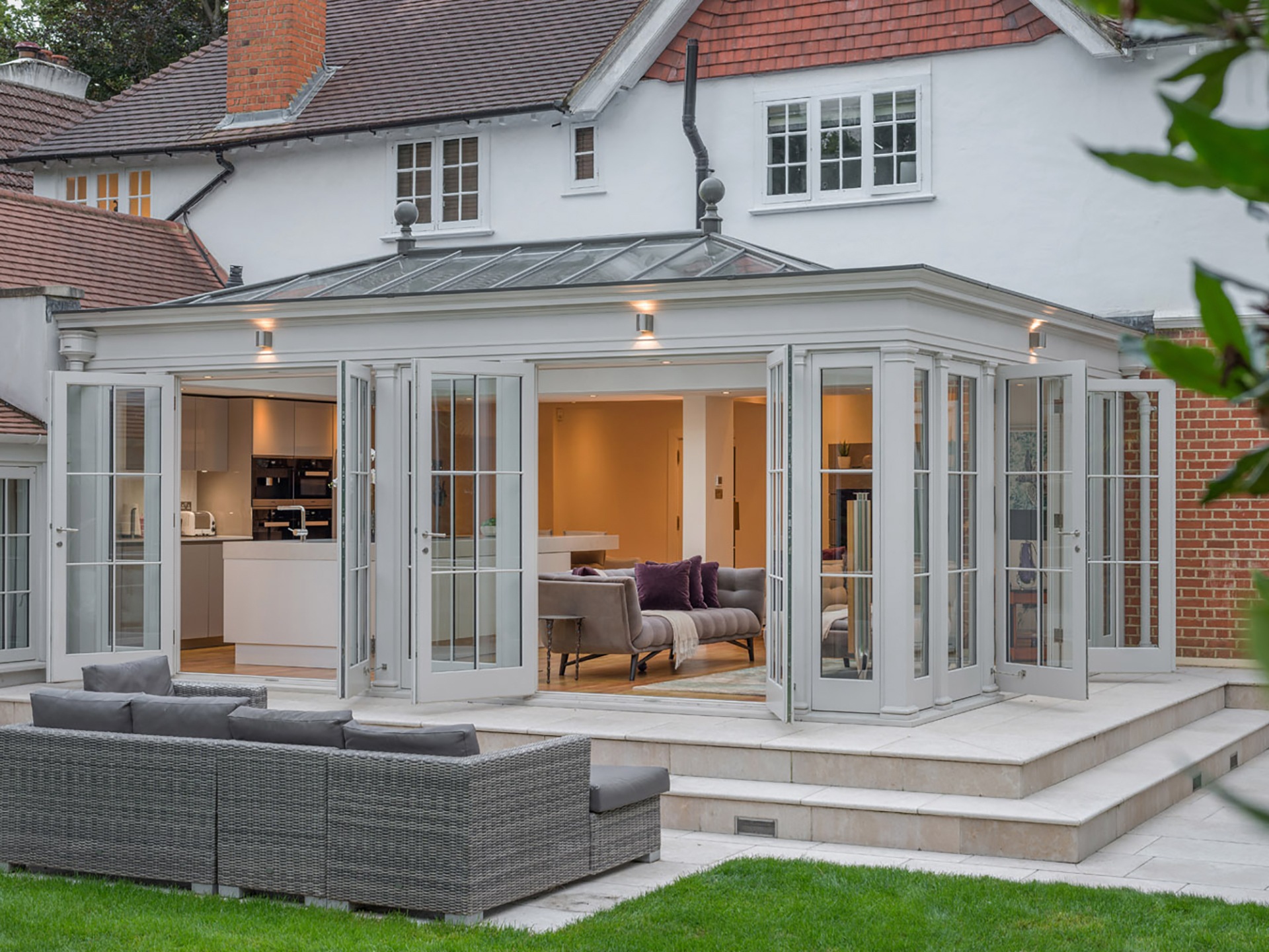
Image credit: Hampton Conservatories
Indoor bifolds
Another fashion in bifolds is the increasing use of bifolds inside homes. Using folding glass doors as a way to break up living space – at the same time as allowing light into the centre of the home – is part of the ‘broken plan’ trend. Bifolds can be used to reinstate some of the individual rooms knocked out in the move to open-plan. They can offer partial privacy to let different family members consume media and work in their own spaces, then the doors can be opened for family time and entertaining.
Sliding doors
There are also other options you can consider as an alternative to bifolds. One increasingly popular choice is sliding doors – large glass doors that, as the name suggests, slide in front of each other. Palmer said, “Sliding doors can provide a slick look with a vast expanse of glazing, especially if paired with slim frames. They offer a higher glass-to-frame ratio than bifolds, and, therefore, less sightline disturbance to the outside. Because they slide off to one side, they don’t require the room that bifolds do when open. However, they don’t allow the full aperture to be opened up as bifolds do. Instead, sliding doors typically open around two-thirds of the width of the aperture.”
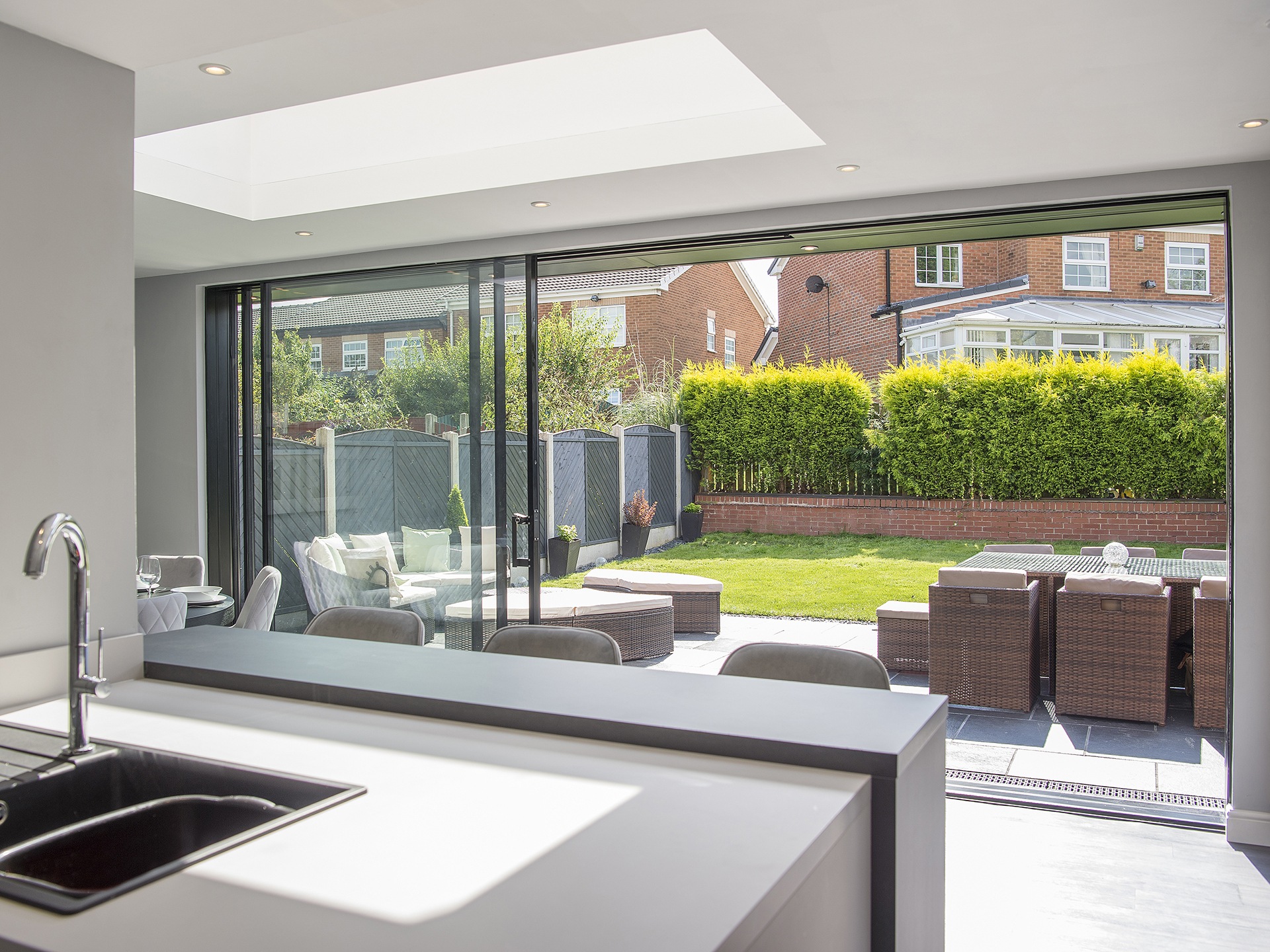
Image credit: Express Bi-folding Doors
Jay Patel, from Everglade Windows said, “We have seen a trend towards sliding doors in the last five years, and this momentum seems to be maintained in the current market. Whereas ten years ago bifold doors made up around 65% of ‘large span’ door sales, it has now almost reversed to around 60%-40% in favour of sliding doors. This is due to consumers realising they don’t get the use out of bifold doors that they imagine, as we don’t have the lifestyles nor the climate to enjoy them in the way we imagine. Sliding doors, however, offer the ability to have large glass panes that don’t obstruct your view and, given that the doors are closed for the vast majority of their lifespan, this is perhaps more attractive. Whilst bifold doors remain a key product line, sliding doors are certainly proving to be increasingly popular for design and practical reasons.”

